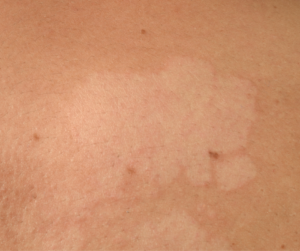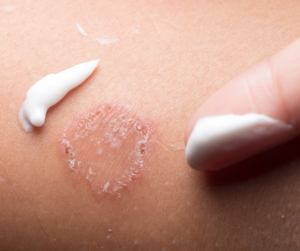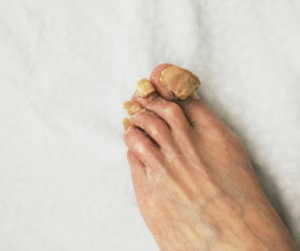Contents
Tinea versicolor
Tinea versicolor (pityriasis versicolor) is a common skin infection caused by a group of yeasts called Malassezia. It’s highly prevalent in tropical regions, affecting upwards of 30-40% of the population in some areas. The warm, humid climate provides an ideal environment for these fungi to thrive.
Adolescents and young adults are particularly susceptible. Contributing factors include oily skin, excessive sweating, immunosuppression, malnutrition, pregnancy, and corticosteroid use.
Currently, 12 different species of Malassezia have been identified and classified. Of these, 8 are commonly associated with human infections: M. sympodialis, M. globosa, M. restricta, M. slooffiae, M. furfur, M. obtusa, M. dermatis, and M. japonica. More recently, M. yamotoensis, M. nana, M. caprae, and M. equina have also been isolated.

Dermatophytosis: A Common Fungal Skin Infection
Dermatophytosis, commonly known as ringworm, is a highly prevalent skin infection caused by filamentous fungi (dermatophytes). It’s particularly widespread in tropical climates with warm, humid conditions that favor fungal growth.
While not life-threatening, dermatophytosis can cause significant discomfort, primarily intense itching. Without proper treatment, the fungal lesions can spread, impacting quality of life.
Causative Agents:
Three main genera of dermatophytes are responsible for human infections: Trichophyton, Epidermophyton, and Microsporum. These fungi can be acquired from various sources, including soil (geophilic organisms), animals (zoophilic), or infected individuals (anthropophilic).
Keratin is essential for the growth of these fungi, which explains why they cannot infect mucous membranes.
Predisposing Factors:
Several factors contribute to the development of dermatophytosis:
- Overcrowding and poor hygiene: Shared living spaces, communal sleeping arrangements, and the common use of clothing facilitate transmission.
- Hot and humid climate: Excessive sweating alters skin pH, creating a favorable environment for fungal growth.
- Skin disruptions: Abrasions, dry skin, and abnormalities in the stratum corneum (outermost skin layer) increase susceptibility.
- Systemic factors: Endocrine disorders, immunosuppression, prolonged antibiotic use, and immunosuppressive medications can compromise the body’s defenses.

Candidiasis of the Skin and Mucosa
Candidiasis, also known as candidosis, refers to infections caused by yeasts of the genus Candida.
-
Historical Perspective: As far back as the time of Hippocrates, oral candidiasis was described in medical texts. In 1847, French mycologist Charles Philippe Robin classified the fungi Oidium albicans, using the term “albicans,” meaning “white,” to denote the species responsible for oral thrush. The official designation Candida albicans was adopted in 1954.
-
Prevalence and Risk Factors: Candidiasis can affect individuals of all ages and both sexes. However, certain predisposing factors increase susceptibility, including diabetes mellitus, xerostomia (dry mouth), occlusive dressings, hyperhidrosis (excessive sweating), broad-spectrum antibiotic or corticosteroid use, and immunosuppression, including HIV/AIDS.
-
Etiology:
- Candida albicans is the predominant causative agent. This oval-shaped yeast, measuring 2-6 × 3-9 µm, can produce budding yeast cells, pseudohyphae, and true hyphae.
- While the genus Candida comprises over 100 species, most are not pathogenic to humans. However, several other species, such as C. tropicalis, C. dubliniensis, C. parapsilosis, C. guilliermondii, C. krusei, C. pseudotropicalis, C. lusitaniae, C. zeylanoides, and C. glabrata (formerly Torulopsis glabrata), can cause infections, particularly disseminated candidiasis.

Tinea Capitis
Tinea capitis, or scalp ringworm, is a fungal infection that causes inflammation and lesions of the hair, hair follicles, and surrounding skin on the scalp.
This condition primarily affects children and is less common in adults. It has a global distribution, although it occurs more frequently in rural areas than in urban settings. Tinea capitis is contagious and often spreads among family members or classmates.
Etiology
- Dermatophytes are the primary cause of tinea capitis. The most common culprits are Microsporum and Trichophyton species. In the UK and North America, Trichophyton tonsurans is the predominant pathogen, accounting for 90% of cases. However, studies in Vietnam indicate that M. canis is more prevalent.
- White piedra, a fungal infection of the hair shaft, is caused by Trichosporon beigelii. Black piedra, another type of hair shaft infection, is caused by Piedraia hortae. The incidence of piedra has increased with the HIV pandemic. Besides affecting the hair, piedra can also cause systemic infections and involve internal organs.
Classification of Dermatophytes
Dermatophytes are often classified based on their mode of transmission:
- Anthropophilic: These fungi are primarily transmitted between humans.
- Zoophilic: These fungi are primarily transmitted from animals to humans.
- Geophilic: These fungi are found in the soil and can infect humans through contact with contaminated soil.
This classification system helps guide treatment and prevention strategies. For example, zoophilic infections often require more aggressive treatment and may necessitate identifying and treating the animal source to prevent reinfection.

Onychomycosis (Nail Fungus)
Onychomycosis is a prevalent, chronic fungal infection of the nails, often characterized by an insidious onset and gradual progression. In Europe, it’s estimated that roughly 2-6% of the population is affected.
This condition can be caused by various fungal species, resulting in diverse clinical presentations. Diagnosis relies on both clinical assessment and mycological examination (e.g., microscopy, culture) to confirm the presence of fungal elements.
Causative Agents
- Dermatophytes: These filamentous fungi account for over 90% of onychomycosis cases. Trichophyton species predominate, notably T. rubrum, T. violaceum, and T. mentagrophyte. Epidermophyton floccosum is a less common dermatophyte involved.
- Yeasts: Candida species are the primary yeasts implicated in onychomycosis, particularly C. albicans and C. tropicalis. Although less frequent, Malassezia species such as M. furfur can also be causative agents.
- Non-dermatophyte Molds: These are less common culprits, including Fusarium species, Aspergillus species, Scopulariopsis brevicaulis, Scytalidium hyalinum, and Hendersonula toruloidea.

An ideal antifungal prophylactic agent would possess rapid, broad-spectrum fungicidal and bactericidal activity, be relatively inexpensive, have proven in vitro and in vivo efficacy, and possess a favorable side-effect profile. In our study, HOCl at 100 ppm effectively eradicated all tested molds ( Acremonium kiliense, Aspergillus flavus, Aspergillus fumigatus, Fusarium solani, Mucor indicus) and yeasts (Candida albicans, Candida parapsilosis), with fungicidal activity observed within 15 seconds. This rapid fungicidal and sporicidal activity represents a significant advantage over conventional antifungal treatments, which require hours or even days to demonstrate activity and may not be active against spores. Unlike some antifungal agents that are active against certain species but not others, HOCl exhibited rapid and potent activity against all tested species, encompassing the genera Acremonium, Aspergillus, Fusarium, Mucor, and Candida. This broad-spectrum activity makes HOCl an attractive candidate for a global antifungal prophylactic, particularly in developing countries.
— Study by Silvia Odorcic et al., Fungal Infections Following Boston Type 1 Keratoprosthesis Implantation: Literature Review and In Vitro Antifungal Activity of Hypochlorous Acid, 2015

MiraChlor Antimicrobial Solution
Applications:
- Skin antisepsis: Effective for sanitizing various body areas.
- Surface disinfection: Suitable for use on all surfaces, including food contact surfaces, children’s toys, and personal items.
- Wound care: Helps prevent infection in minor cuts, scrapes, and burns.
- Odor elimination: Neutralizes odors in the air and on various surfaces, materials, and equipment.

MiraChlor: A Medical-Grade Disinfectant
-
Preoperative, intraoperative, and postoperative skin disinfection: MiraChlor effectively prepares the surgical site by eliminating microorganisms before, during, and after surgical procedures, reducing the risk of surgical site infections.
-
Wound and ulcer antisepsis: MiraChlor can be utilized for the topical antisepsis of wounds, ulcers, and surgical incisions, promoting healing and preventing complications.


